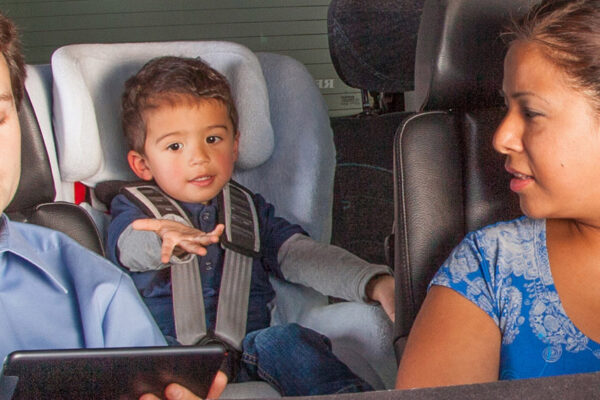
System analyses in-car activities for next-gen ADAS
Eyes on the road, always ready to (re)act – this is the way car drivers today are sitting at the wheel. In the future this might change: If cars that steer and bake autonomously the driver can lay back texting or turn around to the kids on the back seat. It also would be possible that the car itself offers enhanced infotainment options, opening up new possibilities for the driver to spend his time. However, while numerous sensors are available that analyze the car’s surroundings, such systems for the vehicle’s interior are missing.
Within their project Intelligent Car Interieur (InCarIN), researchers from Fraunhofer Institutes IOSB in Karlsruhe and IAO in Stuttgart along with developers from Volkswagen, Bosch and Visteon have developed a system that analyses the interior. “Our sensors scan the entire interior” explains IOSB group manager Michael Voit. “Through depth cameras we can identify the number of occupants along with their size and their sitting posture. From this information we deduce their activities”.
The project’s long-term goal is the development of new driver assistance systems. Such driver assistance systems could become relevant under the conditions of partially automated driving. If, for example, the driver turns his head around towards the children on the backseat, the system could on the fly depict a camera’s image of the rear seat and what is happening there. Thus, the driver could immediately direct his eyes to the street and yet watch the children’s activities. “Through its sensors the system can estimate how long the driver will need to completely reassume the control over the car after a phase of automated driving,” explains Frederik Diederichs, project manager at Fraunhofer IAO.
Based on information on the exact position of the rear seat passengers and their size it also would be possible to adapt airbag deployment to the individual’s size. By analyzing the person’s body position it also could adapt to specific situations: For instance, if the front seat passenger has put his legs onto the dashboard, it could prevent that the airbag fully deploys if in such a situation a crash occurs.
The challenge lies in the evaluation of the data recorded. Currently, the system is already capable of recognizing persons and limbs. It can also comprehend their movements by means of a “virtual skeleton” it superimposes to the person’s images. But it is still unclear how to teach the system to understand which activities the persons are performing. “It is challenging to reliably identify the things the person is dealing with. If you consider that in principle any object could be brought into the car, it must be understood that there have to be limits to the acquisition options”, Voit said.
First the researchers tested the cameras and the related processing algorithms in the IAO’s driving simulator. As the next step, the system will be integrated into a Volkswagen Multivan to fathom out its capabilities in trials with real persons. The researchers hope that the results of the projects will provide the fundaments for vehicle concepts of the next decade.
More information: https://www.iao.fraunhofer.de/lang-en/about-us.html
 If you enjoyed this article, you will like the following ones: don't miss them by subscribing to :
eeNews on Google News
If you enjoyed this article, you will like the following ones: don't miss them by subscribing to :
eeNews on Google News




